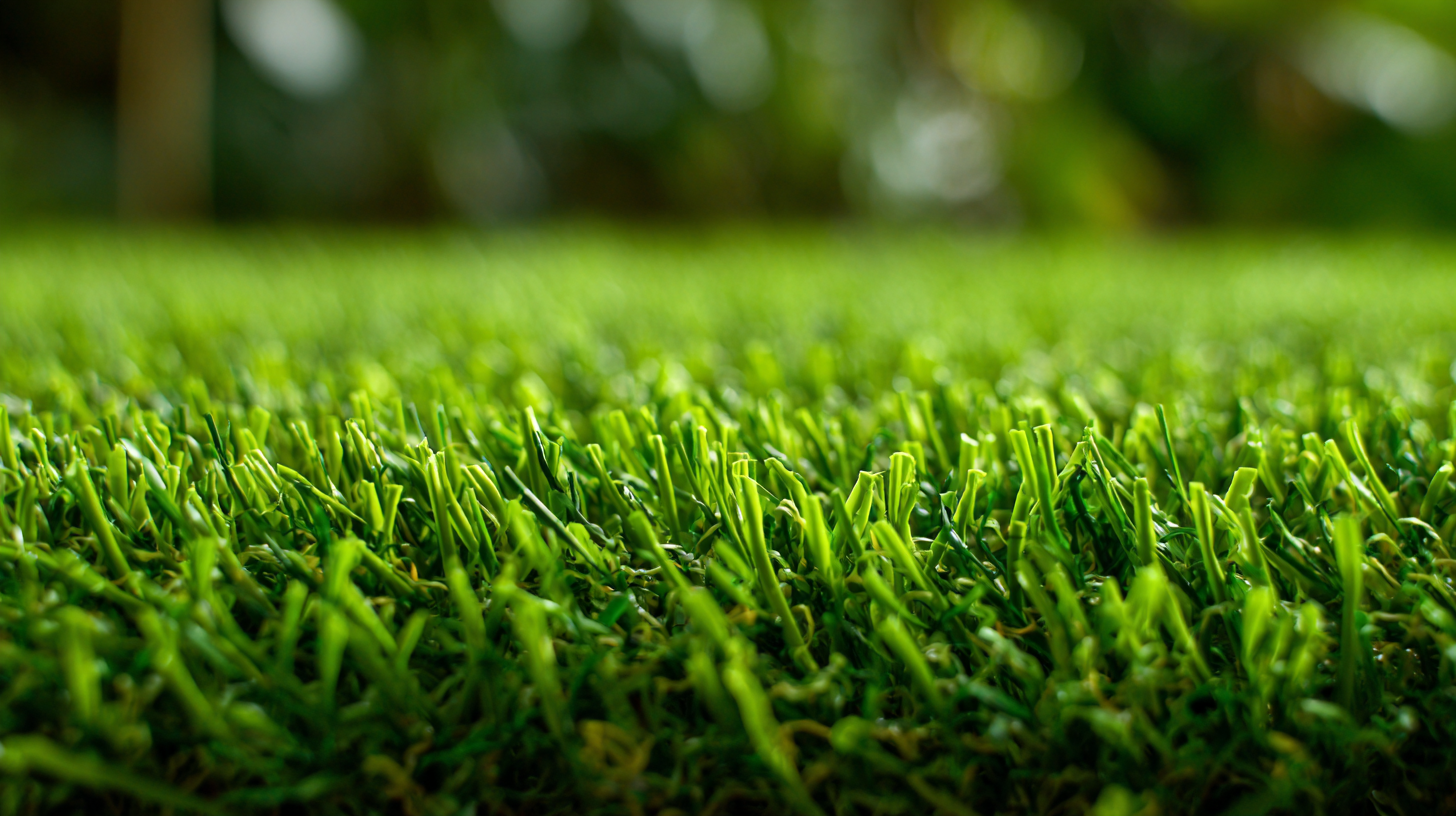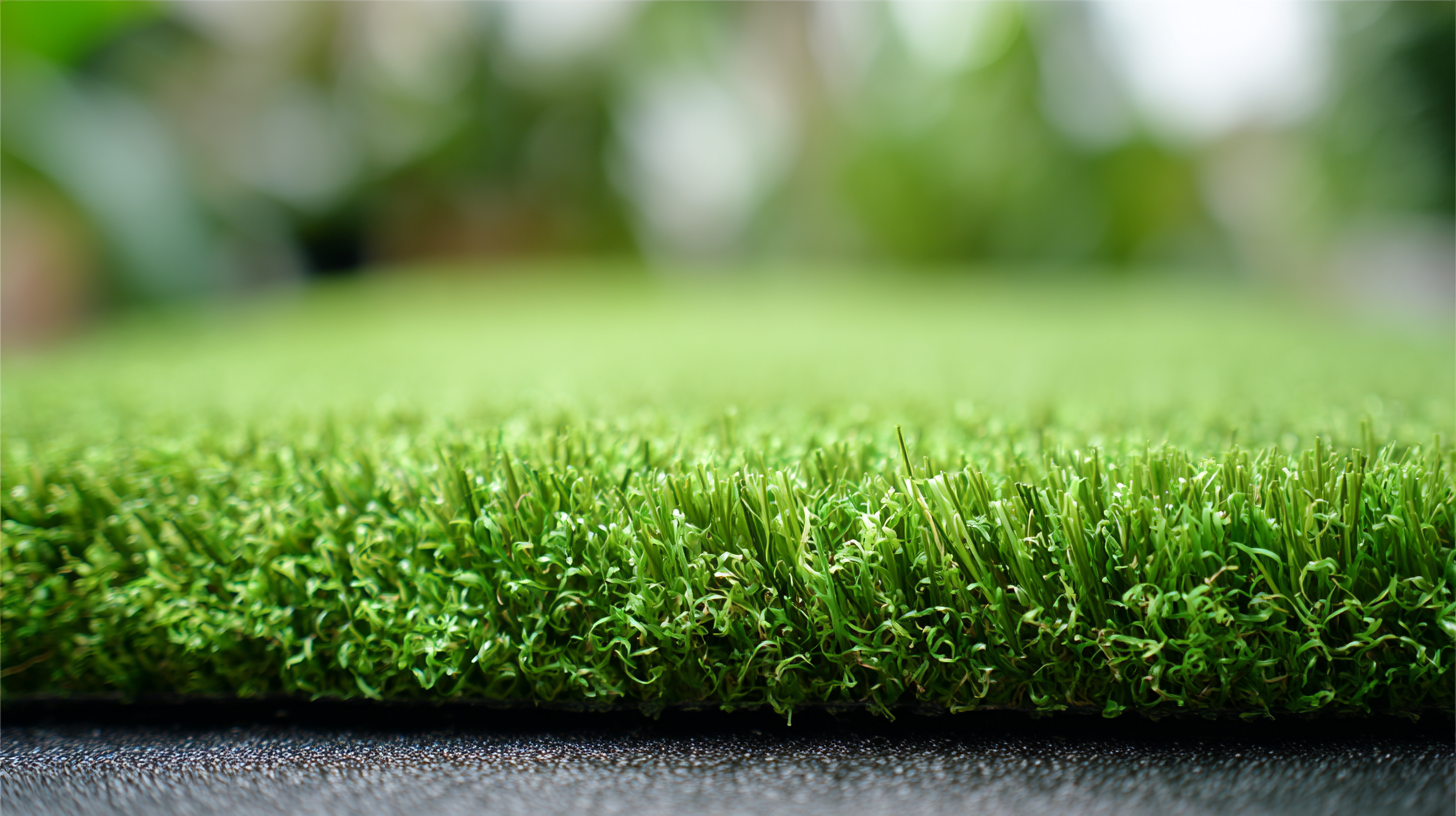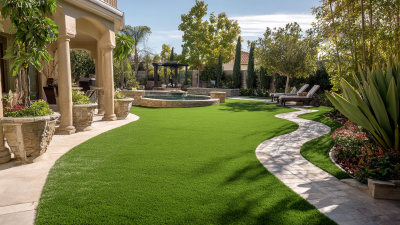In recent years, the popularity of Plastic Artificial Grass has skyrocketed as homeowners and businesses alike seek sustainable and versatile landscaping solutions. According to a report by the Synthetic Turf Council, the market for artificial turf is projected to reach $5.4 billion by 2025, reflecting a growing preference for low-maintenance alternatives to natural grass. One of the primary benefits of choosing Plastic Artificial Grass is its durability, with many products designed to last over 15 years while retaining their vibrant appearance. Furthermore, studies indicate that artificial turf can reduce water consumption by up to 60%, making it an attractive option for eco-conscious consumers in drought-prone regions. This blend of aesthetics, practicality, and environmental benefits positions Plastic Artificial Grass as a compelling choice for enhancing outdoor spaces, catering to the evolving needs of modern landscaping.

When considering the installation of plastic artificial grass in your outdoor space, the first step is to assess the area’s size and shape. Measure the dimensions of your yard or garden, taking note of any existing features such as trees, shrubs, or pathways that may impact the installation. This will help you determine how much artificial grass you will need and how it can be integrated seamlessly into your landscape.
Next, evaluate the type of activities that will take place in the space. If you have children who will be playing on the grass, for example, it’s essential to select a product designed for durability and safety. Additionally, consider drainage and sunlight exposure, as these factors can influence the longevity and maintenance of the artificial grass. By conducting a thorough assessment, you can ensure that your choice of plastic artificial grass not only enhances the aesthetic appeal of your outdoor area but also meets practical needs.
This chart illustrates the main benefits of choosing plastic artificial grass for your outdoor spaces, measured on a scale of 0 to 100. Key advantages include significant cost savings and low maintenance requirements, making it an attractive option for homeowners and businesses alike.
When selecting the right type of plastic artificial grass for your outdoor spaces, it is essential to consider several factors that align with your specific needs.
First, evaluate the type of usage you foresee for your outdoor area. For example, if you have pets or children, look for a more durable, non-toxic option that can withstand wear and tear. There are various grades of artificial grass available, and choosing a higher quality option can lead to longevity and a more natural appearance.
In addition to durability, consider the installation and maintenance requirements. Some types of plastic artificial grass are easier to install and require less maintenance, which can be a significant advantage for busy homeowners. Furthermore, think about the climate in your region; certain products perform better under specific weather conditions. By thoroughly assessing these factors, you can make a well-informed decision that will enhance your outdoor environment while ensuring the grass suits your lifestyle and aesthetic preferences.
 Preparing your ground before laying plastic artificial grass is crucial to ensure a smooth installation and long-lasting results. Begin by clearing the area of any existing grass, weeds, and debris. This can be done using a shovel or a sod cutter for larger spaces. Once cleared, it’s important to level the ground to create a flat surface, which will prevent water pooling and potential damage to the artificial turf.
Preparing your ground before laying plastic artificial grass is crucial to ensure a smooth installation and long-lasting results. Begin by clearing the area of any existing grass, weeds, and debris. This can be done using a shovel or a sod cutter for larger spaces. Once cleared, it’s important to level the ground to create a flat surface, which will prevent water pooling and potential damage to the artificial turf.
Tips: When leveling, consider using a landscape rake to distribute the soil evenly. Additionally, compact the ground with a roller to minimize shifting once the artificial grass is laid. Installing a weed barrier fabric underneath the turf can help prevent unwanted growth from beneath, further ensuring a pristine appearance.
After leveling, it’s beneficial to add a layer of crushed stone or sand as a base. This not only improves drainage but also provides a stable foundation for the grass. With the right preparation, your plastic artificial grass will transform your outdoor space into a beautiful, low-maintenance area.
Tips: Always check for proper drainage in your chosen area to avoid future issues. Moreover, marking the edges where the grass will be laid can help delineate the work area and ensure precise cutting and fitting.
Maintaining the aesthetic appeal and longevity of plastic artificial grass is essential, especially as its popularity continues to surge in outdoor spaces. The global synthetic turf market is projected to exceed $6.56 billion by 2025, with a compound annual growth rate of over 7.2%, driven by consumers' increasing preference for low-maintenance landscaping solutions. To ensure your artificial grass remains vibrant and durable, regular maintenance is key.
Start by keeping the surface clean. Regularly remove debris such as leaves, dirt, and pet waste to prevent the buildup of organic materials that can affect appearance and odor. Additionally, using a stiff broom or a specially designed rake can help maintain the grass blades' upright position. For deeper cleaning, a mixture of warm water and a neutral detergent can be applied, followed by a thorough rinse to keep the grass looking fresh.
For optimal performance, consider occasional infill rejuvenation. This process involves adding new granules to refresh the existing layer, providing better support and stability. As the demand for artificial grass increases, with market revenues expected to exceed $13.15 billion by 2035, proper care will not only enhance your outdoor spaces' aesthetics but also prolong the lifespan of your investment.
When incorporating plastic artificial grass into your outdoor design, maximizing its benefits requires strategic planning and thoughtful execution. According to a report by the Synthetic Turf Council, choosing high-quality artificial grass can enhance the aesthetics of your landscape while reducing maintenance costs by up to 70%. Installations in residential yards not only eliminate the need for watering, eliminating around 55 gallons of water per square foot per year, but also provide a durable solution that withstands extreme weather conditions, making it highly suitable for various climates.

To further capitalize on the advantages of plastic artificial grass, consider integrating it into multifunctional spaces. For instance, using artificial turf in play areas encourages children to engage in outdoor activities, significantly reducing the risk of mud and dirt tracked into the home. Additionally, pairing artificial grass with features like fire pits and seating areas creates a cohesive and inviting environment for entertaining guests.
A well-designed outdoor space with quality plastic grass can boost property value, making it a worthwhile investment.












